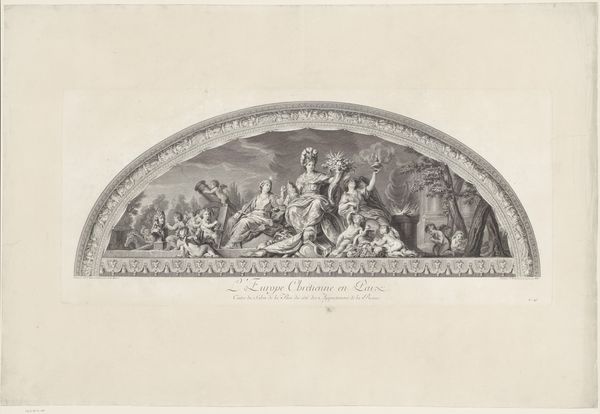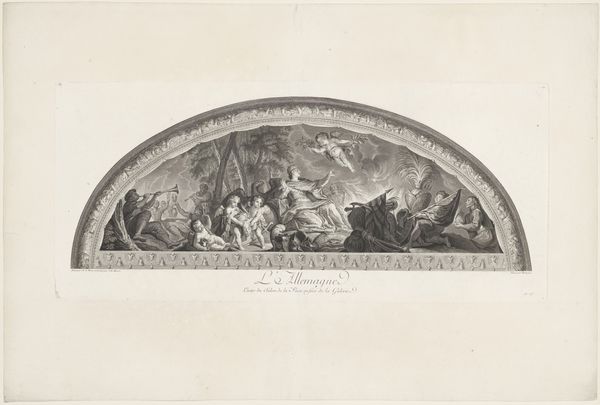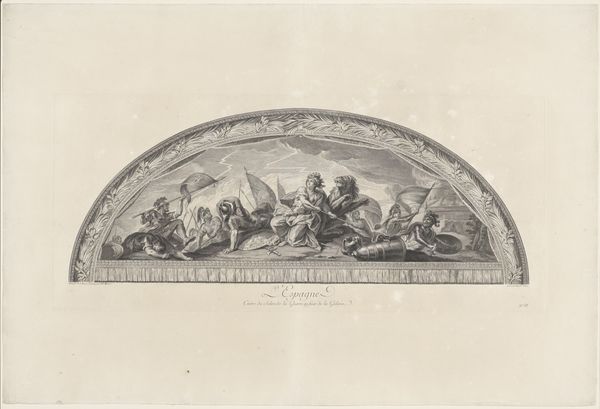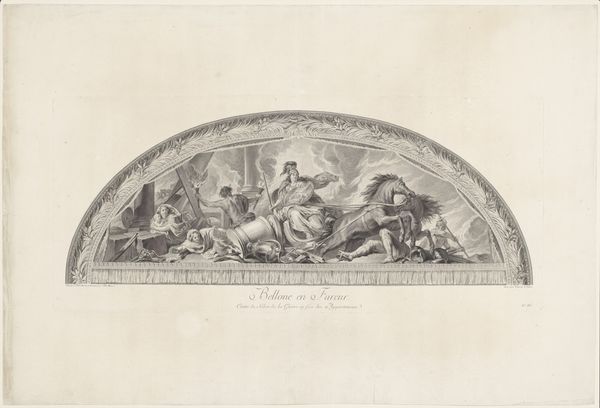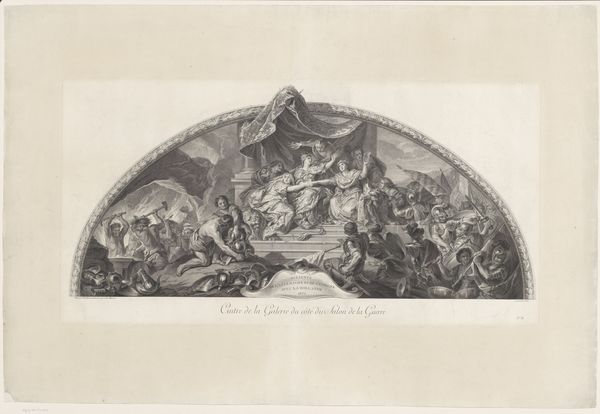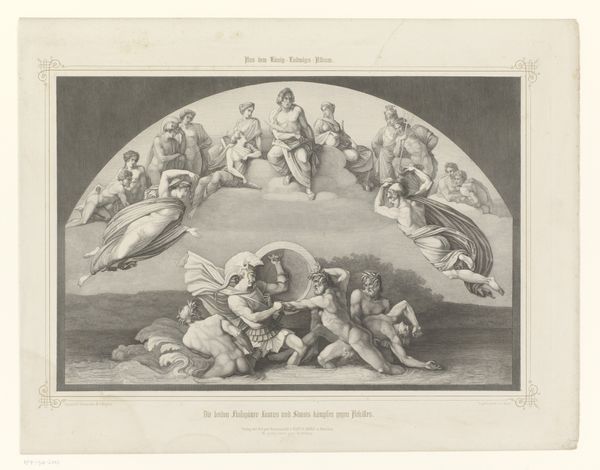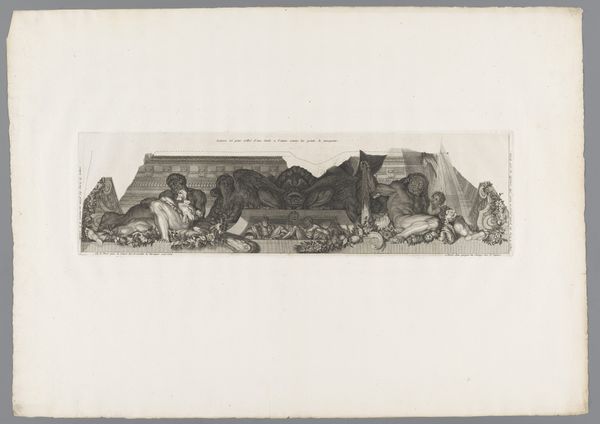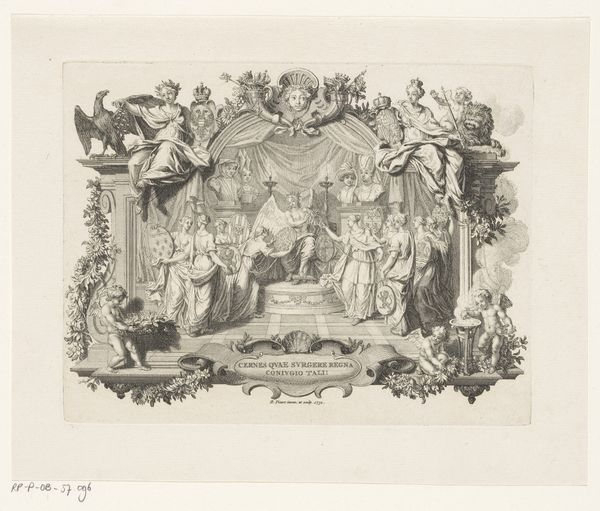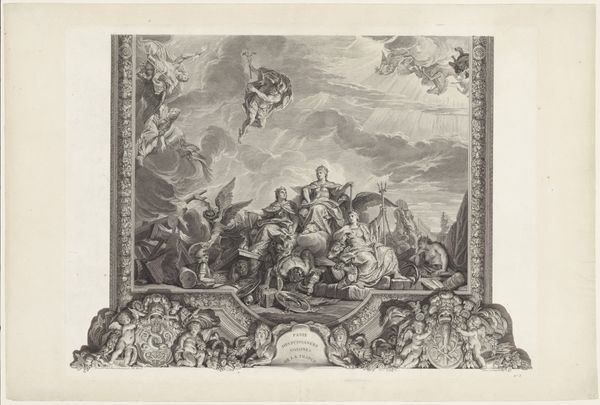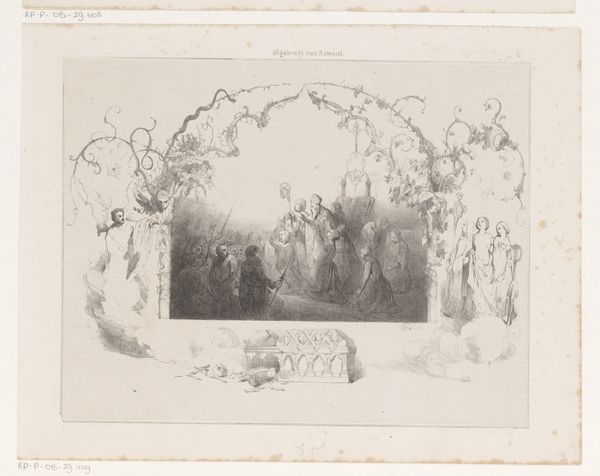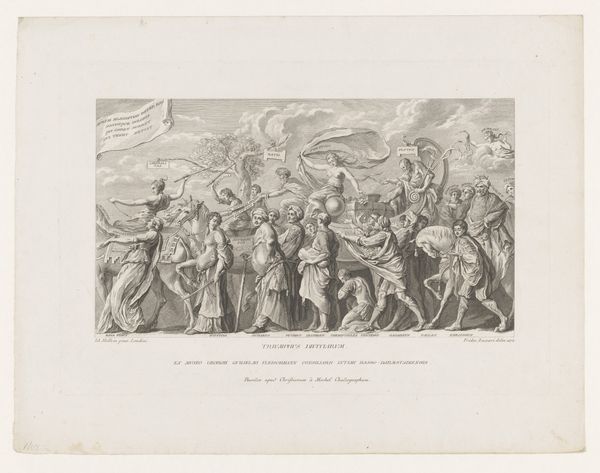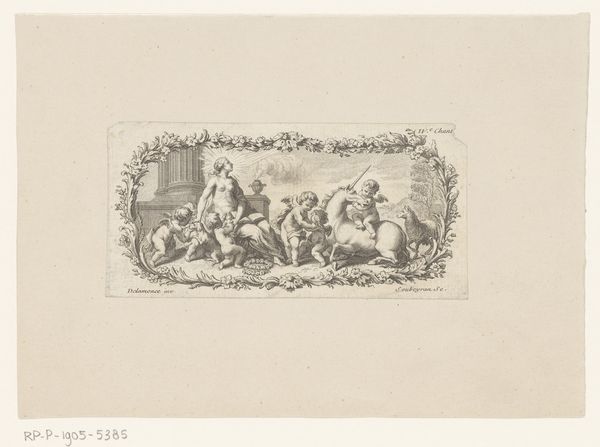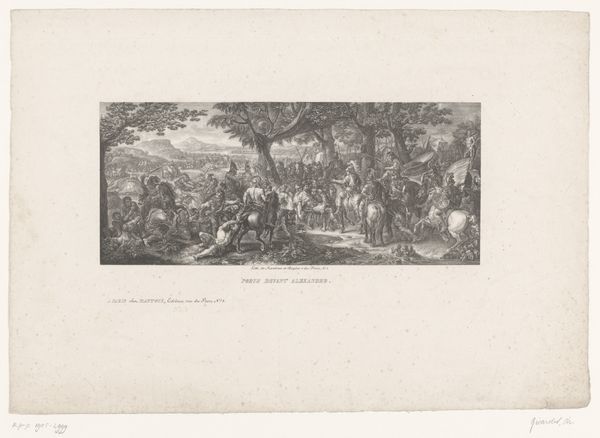
print, engraving
#
weapon
#
allegory
#
baroque
# print
#
old engraving style
#
figuration
#
pencil drawing
#
line
#
history-painting
#
engraving
#
realism
Dimensions: height 364 mm, width 828 mm
Copyright: Rijks Museum: Open Domain
Editor: We're looking at Jacques Nicolas Tardieu’s 1752 engraving, “Allegorie op Spanje,” or Allegory of Spain. The baroque piece, in black and white, features many figures in a semi-circular arrangement. The weaponry and slightly distressed figures suggest some past conflict or battle. What do you see as particularly significant about this allegorical representation? Curator: It's crucial to consider the political climate in which this piece was made. By 1752, Spain’s global power, though still considerable, was on the wane. Allegories like this served to project an image of strength and virtue, masking internal vulnerabilities. What strikes you about the central figure of Spain itself? Editor: I notice she's surrounded by symbols of both war and peace – weaponry at her feet, but also figures making music. It feels like a strategic balancing act. Curator: Exactly. Baroque art often deployed complex symbolism to communicate specific ideological messages. Ask yourself, who was this image intended for, and what message were they meant to receive? The intended audience, typically the elite, would interpret the references to classical mythology, the celebration of military strength, and the promise of prosperity under Spanish rule. How might such imagery have functioned within institutions like royal academies or state-sponsored exhibitions? Editor: It sounds like this engraving is less about pure artistic expression and more about national propaganda, almost like a carefully staged photo-op in print. Curator: Precisely. It makes us consider the role of art not just as an aesthetic object, but as a tool for shaping public opinion and reinforcing power structures. It’s fascinating to see how seemingly neutral artistic conventions are used to legitimize specific political agendas. Has this changed your view on similar works you’ve seen? Editor: It definitely makes me want to look more closely at the context behind art, especially pieces that appear straightforward on the surface. Thanks for your insights! Curator: A pleasure. Analyzing art from a historical perspective opens up entirely new avenues of understanding and appreciation.
Comments
No comments
Be the first to comment and join the conversation on the ultimate creative platform.
